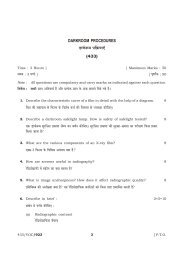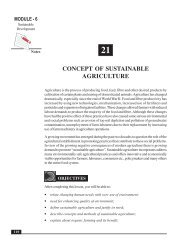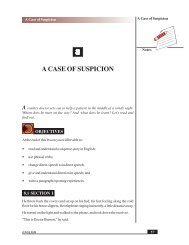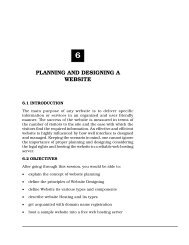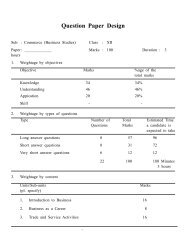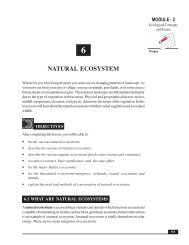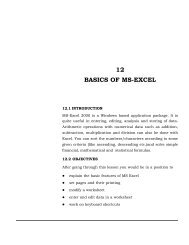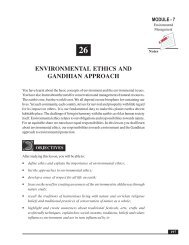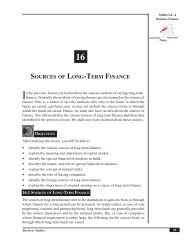APICULTURE, LAC CULTURE AND SERICULTURE
APICULTURE, LAC CULTURE AND SERICULTURE
APICULTURE, LAC CULTURE AND SERICULTURE
Create successful ePaper yourself
Turn your PDF publications into a flip-book with our unique Google optimized e-Paper software.
Apiculture, Lac Culture and Sericulture35.1 <strong>API<strong>CULTURE</strong></strong>35.1.1 Bee-keeping – Its meaning and importanceApiculture is also known as bee-keeping. Why this name?‘Apis’ means bee. The scientific names of different species of honeybees begin withthe generic name Apis. Apiculture or bee-keeping is the art of caring for, andmanipulating colonies of honeybee in large quantity, over and above their ownrequirement.MODULE - 6BEconomic BiologyNotes35.1.2 Brief HistoryThe first evidence of this association came to light from the rock paintings madeby primitive human. Thousands of years ago, Egyptian were well acquainted withbee keeping before the Christian Era. In Rigveda, there are many references to beeand honey. Bee-keeping became a commercial proposition during the 19 th centuryas a result of scientific research. Apiculture is a flourishing industry in manyadvanced countries like USA, Canada, Germany and Australia.35.1.3 Importance of bee keepingThere are three main advantages of bee-keeping:(i)Provides honey - a valuable nutritional food(ii) Provides bees wax - which has many uses in industry(iii) Honey bees are excellent pollinating agents, thus increasing agricultural yields.In terms of actual value this advantage exceeds the other two.35.1.4 Species of honey beeThere are four common species of honey bee under a single genus Apis (apis =bee):1. Apis dorsata (The rock- bee)This is the largest honeybee.Builds single large open comb on high branches of trees and rocks.Produces large quantity of honey, but this bee is difficult to domesticate.This bee is ferocious, stings severely causing fever and sometimes even death.2. Apis indica (The Indian bee)Medium - sizedHive consists of several parallel combs in dark places such as cavities of treetrunks, mud walls, earthen posts, etc.This bee is not so ferocious and can be domesticated3. Apis florea (The little bee)small - sizedBuilds single small combs in bushes, hedges, etc.Honey yield is poor.BIOLOGY111



